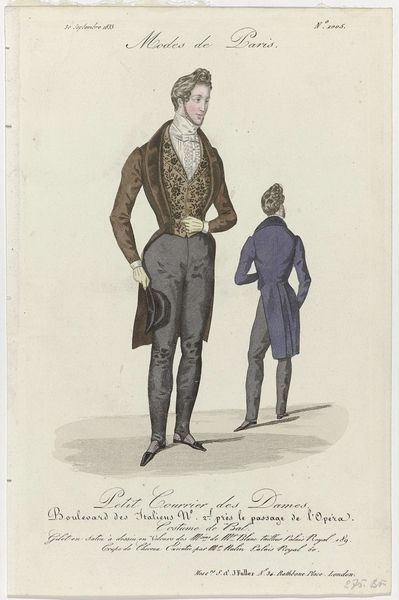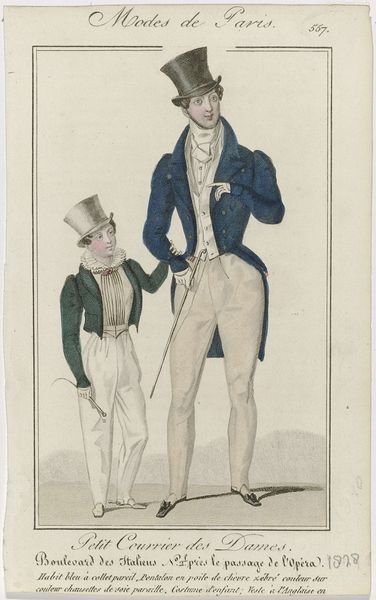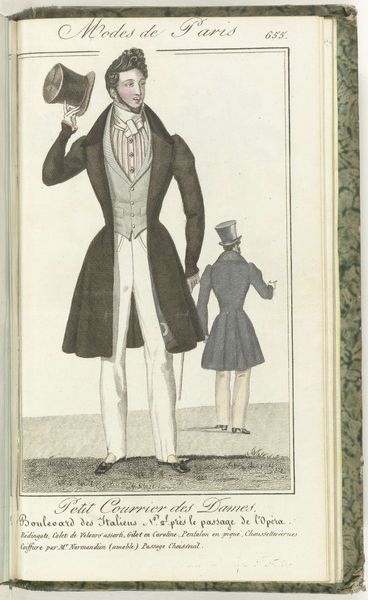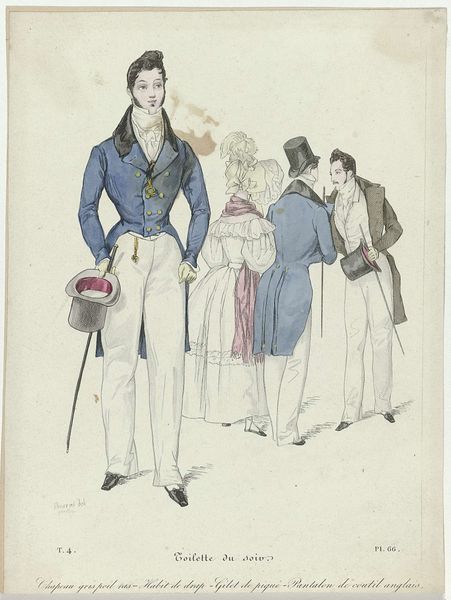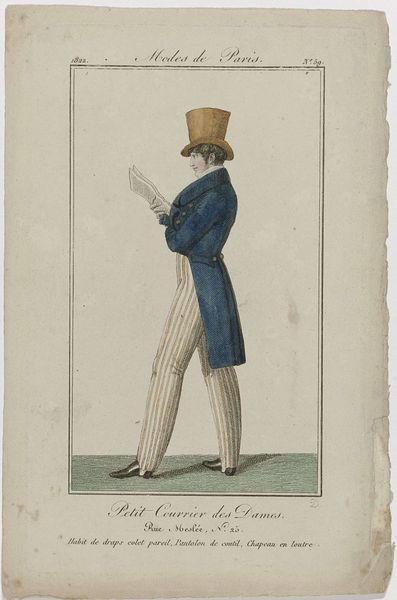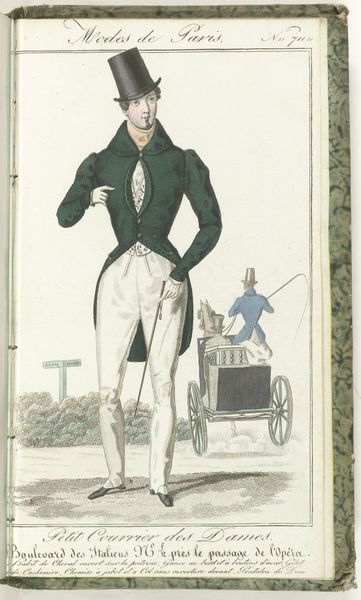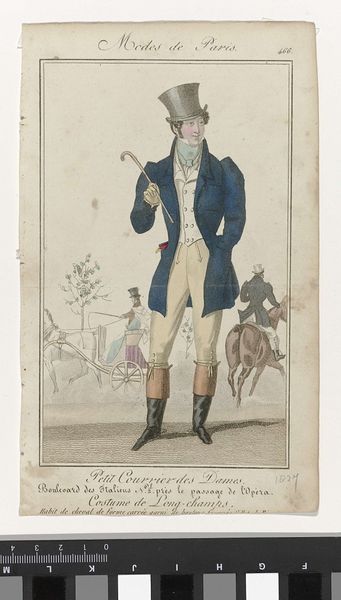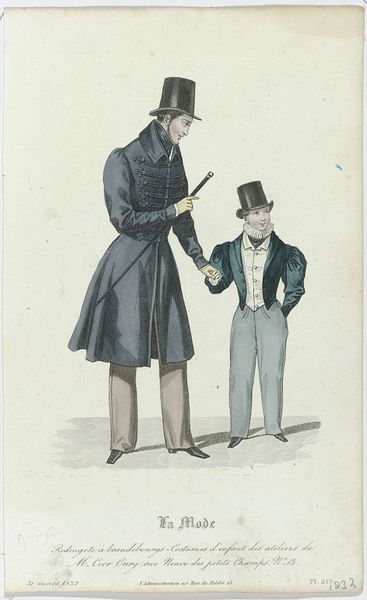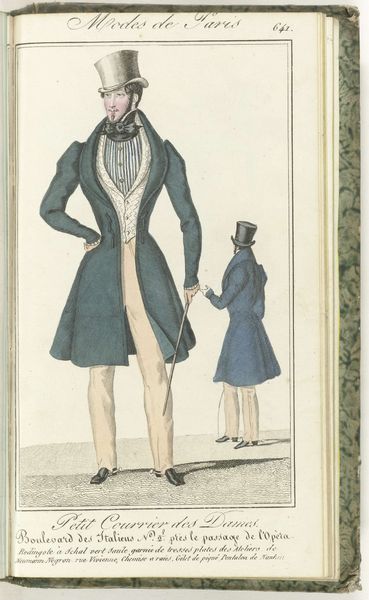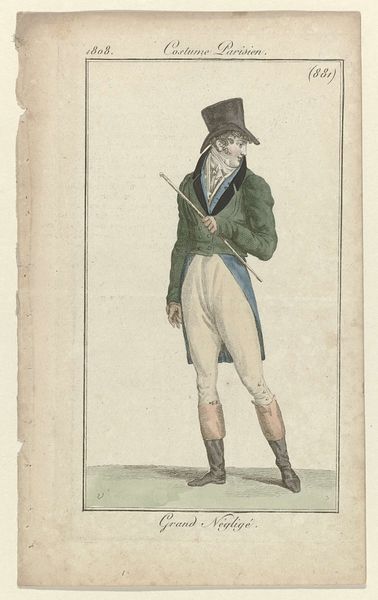
Petit Courrier des Dames, 31 décembre, 1834, No. 1122 : Costumes d'enfans (...) 1834
0:00
0:00
drawing, print, etching
#
portrait
#
drawing
# print
#
etching
#
traditional media
#
figuration
#
romanticism
#
watercolour illustration
Dimensions: height 236 mm, width 154 mm
Copyright: Rijks Museum: Open Domain
Curator: This print, titled "Petit Courrier des Dames, 31 décembre, 1834, No. 1122: Costumes d'enfants…," offers us a glimpse into the world of 1830s Parisian fashion. It’s an etching, likely with watercolor added, and presents three figures showcasing children’s attire of the time. Editor: It's interesting. My initial reaction is how controlled and almost austere the composition feels. The figures are stiff, their expressions inscrutable, and the color palette is restrained, dominated by cool blues and browns. There’s a sense of formality bordering on melancholic. Curator: I agree, and this formality speaks volumes about the cultural values projected onto childhood during that era. Notice how the clothing echoes adult styles, compressing youthful exuberance into miniature versions of adult respectability. There’s a certain performative aspect, the children enacting their future roles through dress. Editor: Precisely. And consider the subtle asymmetry—the taller figure dominates the visual space, casting the two smaller figures into secondary positions. This could visually symbolize hierarchical social structures—authority and submission played out on a diminutive scale. Curator: Also, the gazes… none of them meet the viewer’s eye. It's as if we're observing a tableau, a staged representation rather than an intimate portrayal. There is almost no narrative presented, though there are obvious stories that might relate the figures. They remain closed to us emotionally. The accessories too, the riding crop, books, and hats denote a specific upbringing. Editor: Which is quite fascinating. These are children, but their costumes telegraph social aspirations, and expectations. The choice of rendering them in print rather than a more personalized medium emphasizes the mass production and dissemination of such cultural ideals. Curator: That’s an excellent point. This wasn't just about individual expression, but about propagating a particular image of childhood throughout Parisian society and beyond, which helps to give an impression of childhood as a type, not just an individual. Editor: Looking closely at how line and tone create depth and form, I'm struck by how effective the limited color palette is in conveying texture—the wool of the coats, the sheen of the top hat. It speaks volumes about the skill of the printmaker in capturing nuances of materiality within such a rigid framework. Curator: Indeed, studying this print unveils how visual representations both reflect and actively shape our understanding of childhood—and how this is a constructed phenomenon that reveals far more than merely "fashion". Editor: A rigid construct it appears to be. So much for "insouciance."
Comments
No comments
Be the first to comment and join the conversation on the ultimate creative platform.
